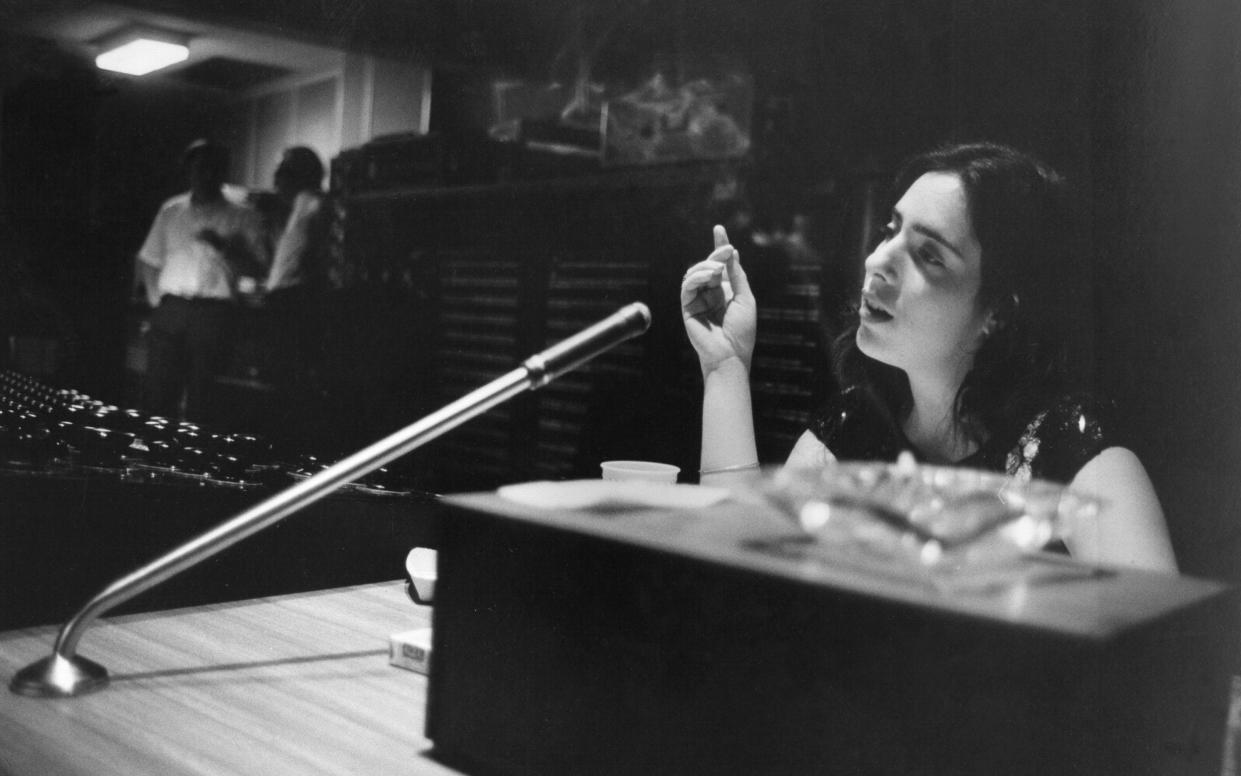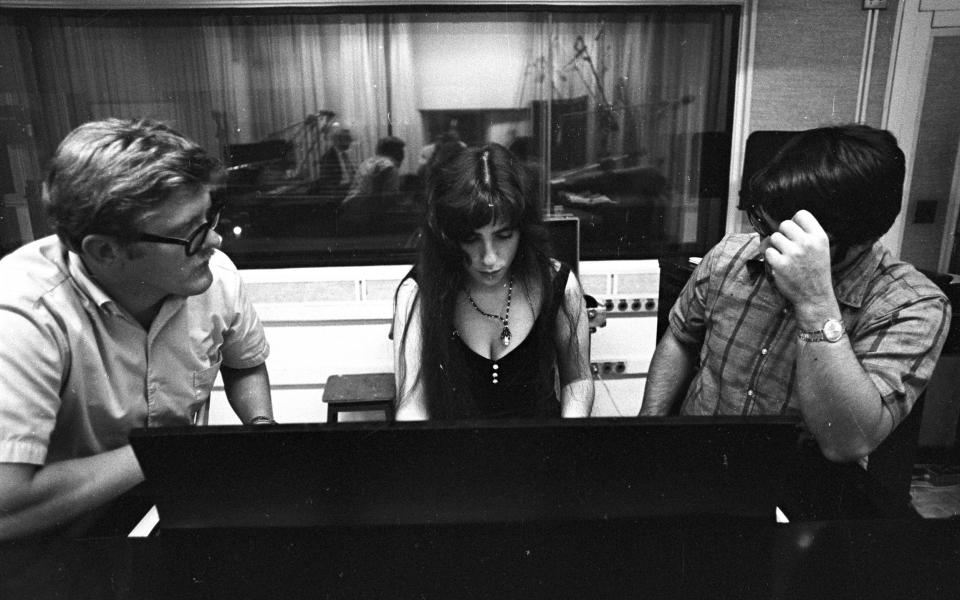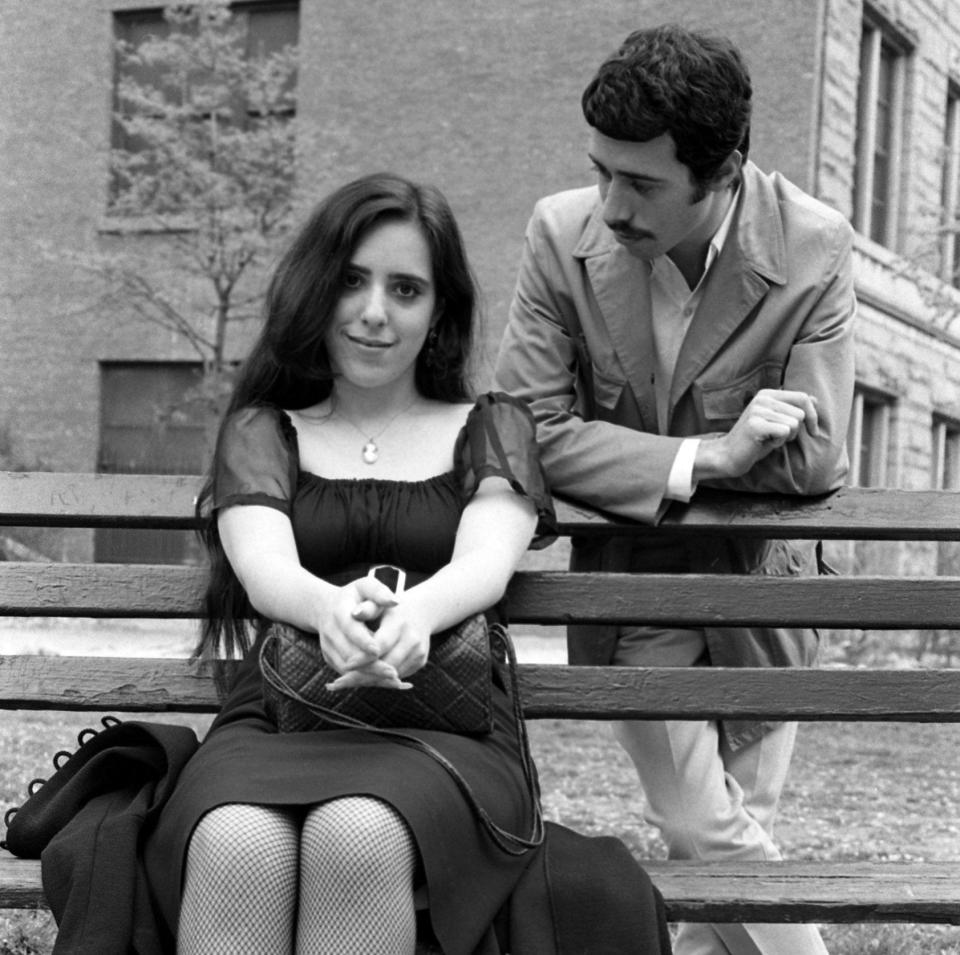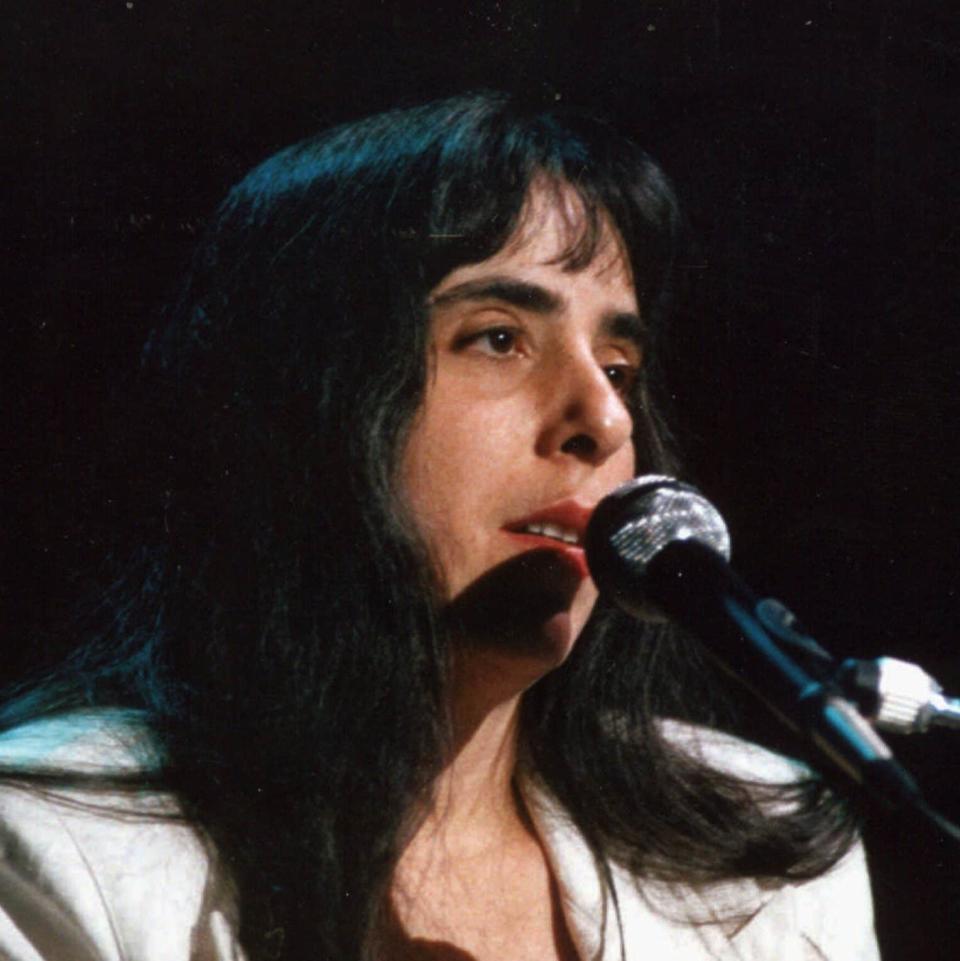Laura Nyro: the Gothic genius who transformed Sixties pop – then quit

When Laura Nyro gathered her musicians in the studio, rather than talking about tempo, chord structures or mood – play it mellow, play it cool – she would talk about colours, shapes, “sensory things and abstractions”.
“I try to explain to them, ‘I want it to be lavender with rushes of gold over here’,” she told Life magazine in 1970, discussing her album New York Tendaberry. “I would describe the instrumentation on You Don’t Love Me When I Cry as ‘warm pale blue with a few white caps on it. When you hear it, you’ll see. And the rhythm in it is pops and snaps and bubbles and jangles.’”
Nyro was poetic, intense, enigmatic, saturnine – but above all, utterly original. In the course of a career that spanned 32 years, before being cruelly foreshortened by her death from of ovarian cancer in 1997 at the age of 49, she recorded 10 studio albums (one released posthumously). These drew on the various influences that had shaped her – sweet harmony rhythm and blues, gospel, jazz and show-tunes, but woven into a tapestry and voice that were completely her own. Her glissando vocals slid sweetly up and down the scale, from the barest whisper to the borders of delirium. When Laura Nyro sang, you felt as though she were tearing off a layer of skin.
She was never a major commercial success; she was too particular, too idiosyncratic for that. But you could compile a telephone directory of artists who have acknowledged her influence, from Joni Mitchell to Rickie Lee Jones, Todd Rundgren to Elton John, Kate Bush to Patti Smith.
In the years since her death, Nyro’s music has been resurrected in various live recordings and the posthumous release in 2001 of Angel in the Dark, featuring her final studio recordings, made in 1994 and 1995. But now comes a major retrospective: American Dreamer, a limited-edition eight-LP vinyl box-set, featuring seven original studio albums from 1967 to 1978 and a bonus LP of demos and live recordings, all complemented by excellent liner notes by the writer Peter Doggett, recounting Nyro’s life and career.
An “Italian-Catholic-cum-European-Jewish girl”, as she put it, Nyro was born and grew up in the Bronx. Her father, Lou Nigro, was a piano tuner, trumpet player and jazz aficionado. Her mother, Gilda, was a book-keeper with a love of opera. Music was in her blood, and in the air and on the sidewalks of her neighbourhood, where she would join the local kids in impromptu harmonising on doo-wop and girl-group RnB hits.

In a 1969 interview, she would summarise her teenage years with a list of her dreads and obsessions: “obesity, lack of confidence, eccentric facial make-up, weird clothing, fear of the future”. What she failed to mention was her precocious talent. At the age of five, she was playing the piano, and by seven she was writing songs. As a teenager she took voice classes in opera, but self-conscious about both her voice and her appearance, Nyro originally envisioned herself as a songwriter rather than a performer.
When she was 17, with the help of a cousin she went into a demo studio and recorded three of her compositions, which led to a meeting with the veteran A&R man, Artie Mogull. The first song she played him was And When I Die: “I’m not scared of dying, / And I don’t really care, / If it’s peace you find in dying, / Well, then let the time be near.” Mogull was floored, became her manager, and introduced her to the folk-music impresario Milt Okum, who played the song for the trio Peter, Paul and Mary, who were one of the biggest-selling acts in America. Mogull would later recall that “they recorded it within a week” for 1966’s The Peter, Paul and Mary Album.
This set a pattern of Nyro being fêted as a songwriter long before being recognised as an artist in her own right. Her first album, More Than a New Discovery, was released in 1967, and drew on her love for Brill Building pop and RnB. It provided a hit for the Fifth Dimension with Wedding Bell Blues, then (later) for Blood, Sweat and Tears with When I Die and Barbra Streisand with Stoney End. In time, as Peter Doggett notes, almost all of its 12 songs would attract cover versions from noted artists, and half of them would make the pop charts – although not as sung by Nyro.
The list of artists who would go on to record her songs between 1968 and 1970 would include Bobby Darin, Tennessee Ernie Ford, Paul Revere and Diana Ross. Yet the impression this might give of Nyro as a writer of airy pop confections is misleading. No one sang Nyro quite like Nyro herself, and in the hands of others, these hits hardly reflected the range and idiosyncratic brilliance of her writing, or the sublime intensity of her performances.
At the time of More Than a New Discovery, Nyro was not only an ingénue recording artist, she had yet to give a single live performance. But in June 1967, she was invited to perform at the Monterey Pop Festival, the curtain-raiser to the sunny optimism of the so-called “Summer of Love”. She dressed in gothic black. Appearing between The Byrds and Jefferson Airplane, she performed a handful of songs, including the searing Poverty Train, which dwelt on the dark seduction of “sweet cocaine”. (Drugs, with which she’d dabbled unhappily as a teenager, were a theme she’d return to again and again.)
Legend has it that her performance was a disaster, and while film footage suggests that’s an exaggeration, the set was sufficiently out of step with the general mood of the event that it wouldn’t be included in DA Pennebaker’s 1968 film, Monterey Pop. Nyro was so demoralised that she didn’t perform in public for 18 months. But one serendipitous outcome was meeting David Geffen, who was working as an agent at the William Morris Agency. A smitten Geffen freed her from her contract with Artie Mogull – signed when she was underage – and became her manager, securing a record contract with Columbia.
This began a run of three albums in the space of two years that would come to define Nyro’s genius. Eli and the 13th Confession was released in 1968. The photo of Nyro on the cover looked like a Goya painting; the album’s lyric sheet was perfumed, at her request. The songs were a collage of uptown soul, jazz and pop, from the hushed romanticism of Emmie to the exultant The Confession – Nyro as an intimate balladeer one minute and a revivalist preacher the next – with melodies that sparkled and seduced while refusing to be constrained within a conventional framework.
For Elton John, Nyro was a revelation. “She was an amazing writer,” he said. “The first writer I heard who didn’t follow verse, chorus, middle-eight structures… there were no rules for her, which was absolutely spellbinding.”
Nyro’s next album, New York Tendaberry (1969), was a hymn to the city of her birth: in its atmospheres, tonal colours and lyrical themes, it was her Rhapsody in Blue. (It was no accident that it had critics reaching for comparisons to George Gershwin.) The melodies and the lyrical themes were starker, given to a brooding intensity. The producer, Narada Michael Walden, would tell the fanciful story of how Nyro would ride to the studio through Central Park in a horse-drawn carriage, dressed in a black shawl.

Listen to the title track. From its first delicate piano notes, ushering in Nyro’s voice, little more than a whisper in your ear – “New York tendaberry…” – the piano shifts to a higher register, her voice following, as if skipping on stones across a stream, conjuring impressionistic images of “Rugs and drapes and drugs and capes, / Sweet kids in hunger slums”, soaring upwards, pausing, tumbling, then soaring again to its exultant, hymnal line: “You look like a city, but you feel like a religion to me.”
The cover, in black-and-white, showed Nyro on a tenement fire-escape, head tilted upwards, eyes closed, as if intoxicated by the scents of the city and dreaming into existence the characters in her songs: “Rosie Pearl, the big blonde girl”, in Tom Cat Goodbye, who “sails around like a steamboat”, and her miscreant lover Tom, who’s “never gonna make a movie maker, always be a city faker” – and whom, in the last verse, Pearl thinks aloud that she might kill.
The anomaly on the album was Save the Country, shaped like a gospel song, a response to the assassination of Martin Luther King Jr:
And the precious king, he loved the people to sing,
Babes in the blinkin’ sun sang ‘We Shall Overcome’,
And I got fury in my soul, fury’s gonna take me to the glory goal,
In my mind I can’t study war no more,
Save the people! Save the children!
Save the country now!
In 1968, at the Democratic Party convention in Chicago, where Hubert Humphrey was nominated as the party’s candidate for the US presidency, a Los Angeles radio station played Save the Country once an hour. It was a plea Nyro reiterated on her next album, Christmas and the Beads of Sweat (1970), in its final song, Christmas in My Soul, a lament for a nation torn apart by the Vietnam War and civil strife: ‘I love my country as it dies, / In war and pain before my eyes’.
This run of three albums is roughly contemporaneous with, and stands beside the trio of, defining albums by Bob Dylan (Bringing It All Back Home, Highway 61 Revisited, Blonde on Blonde), Van Morrison (Astral Weeks, Moondance, St Dominic’s Preview) and Joni Mitchell (Ladies of the Canyon, Blue, For the Roses) – all artistic pinnacles of the music of the period.
Nyro was shy and private, an odd combination of vulnerability and deep, obstinate conviction in her own artistry. “She was like a flower that needed to be taken care of delicately,” her two-time producer Charlie Callelo would remember. Clive Davis, the music executive who signed her to Columbia, wrote of her emotions “riding on very, very sensitive antennae”. She disliked the music business intensely.

Her mentor David Geffen had founded his own label Asylum, and planned to sign Nyro as his first artist. But following the release in 1971 of Gonna Take a Miracle, with the group LaBelle – a love letter to the music with which she’d grown up, with cover versions of songs by Smokey Robinson, The Shirelles and The Royalettes – a dispute between them led to Nyro dropping Geffen as her manager. He described it as the biggest betrayal of his life, saying that he “cried for days”.
Nyro would not release another album for five years. She married – and then divorced – a Vietnam veteran and carpenter named David Bianchini. She left New York and moved to the country; she travelled in India and Asia, and became interested in Eastern religions. The heady clamour and rush of New York receded into the past, in both her life and her music.
On her comeback album, Smile, released in 1976, the melodies were sweeter, the arrangements jazzier and more mellow; the blazing intensity had died down to warm, comforting embers. It would set the pattern for her recordings thereafter, as her songs became less abstract, and more pointedly focused on ecology, animal rights, feminism and motherhood (she had son in 1979). In the early 1980s, she began living with a painter, Maria Desiderio, a relationship that would last for the rest of Nyro’s life.
Her last album, Walk the Dog and Light the Light, was released in 1993. The following year, I saw her perform for only the second time ever in Britain, at the Union Chapel in London. It would also be the last before her 1997 death. The setting was apt, the mood was reverential, the music prayerful. She began with Dedicated to the One I Love – a song she’d loved as a teenager – then played all the songs you could have wished her to play, and ended with another memento of her youth, Walk On By.
In the spellbound seconds after she finished, you could have heard a pin drop, before she left the stage to tumultuous applause. Quite simply, Laura Nyro took you… there.
American Dreamer: 1967–1978 is out on Madfish now
